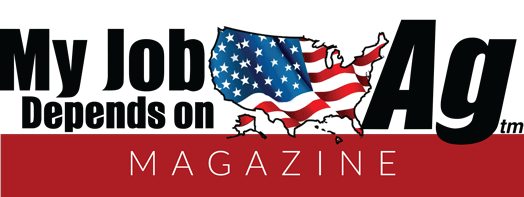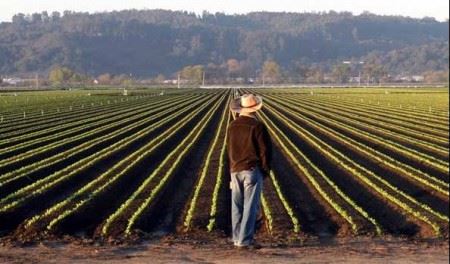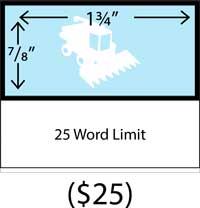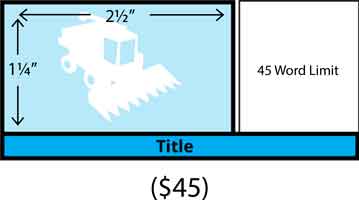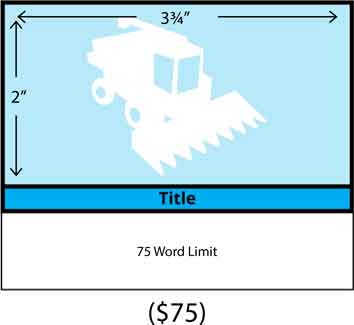U.S. farmers currently face a complex landscape when considering major machinery and equipment purchases. Economic uncertainty and pressures, technological advancements and policy shifts are influencing their decisions, leading to both apprehension and optimism within the agricultural community.
Economic Pressures and Market Dynamics
The agricultural machinery market has experienced significant fluctuations. In January 2025, U.S. sales of agricultural tractors dropped by 15.8%, with self-propelled combine sales plummeting 78.9% compared to the previous year, according to data from the Association of Equipment Manufacturers (AEM).
AEM Senior Vice President Curt Blades attributes these declines to several ongoing challenges facing the agricultural industry. “As we enter 2025, we’re seeing a continuation of slow sales throughout 2024,” he said in a recent statement. “The ag industry continues to face uncertainties including global trade concerns, tariffs, and the lack of assurance that a farm bill provides. These uncertainties are reflected in the softness of the ag equipment market.”
Rising equipment costs have been a persistent concern. Since 1990, new farm equipment prices have increased at double the rate of inflation, making affordability a significant issue for many farmers. This escalation in prices, coupled with tight profit margins due to fluctuating commodity prices and high input costs, has led farmers to be more cautious about investing in new machinery.
Interest rates also play a crucial role in financing large equipment purchases. As of March 2025, USDA lending rates for agricultural producers are set at around 4.250% for three-year loan terms and 4.375% for five-year terms. While these rates are relatively stable, they still represent a significant cost factor for farmers considering new investments.
Shift Towards Used Equipment and Upgrades
Given these economic challenges, many farmers are turning to the used equipment market or opting to upgrade existing machinery. The demand for used equipment has remained robust, as it offers a more cost-effective alternative to purchasing new machinery. Additionally, precision agriculture upgrades are gaining popularity, allowing farmers to enhance the efficiency of their current equipment without the substantial investment required for new purchases.
This trend is also evident in the aftermarket sector, including parts and services, which continues to grow as farmers maintain and upgrade their existing machinery. This approach enables farmers to improve productivity while managing costs effectively.

Technological Advancements and Sustainability Initiatives
Despite economic constraints, there is a growing interest in adopting advanced technologies to enhance farm operations. At the recent Consumer Electronics Show (CES) in Las Vegas, companies showcased sustainable farming technologies aimed at addressing climate change and labor shortages. For instance, John Deere unveiled autonomous heavy equipment capable of efficiently spraying pesticides and fertilizers, while Kubota presented AI technology to detect crop diseases and pests, allowing for precise chemical applications.
These innovations reflect a broader industry trend towards automation and precision agriculture, offering potential long-term benefits in efficiency and sustainability. The farm labor shortage is a major motivator when it comes to farmers considering precision agricultural machinery and equipment. However, the initial investment required for such technologies may be a barrier for many farmers, particularly those already facing financial pressures.
Policy Uncertainties and Trade Concerns
Policy decisions have also introduced uncertainties affecting farmers’ investment plans. The Trump administration’s freeze on federal loans and grants, including programs like the Rural Energy for America Program (REAP), has led to financial disruptions for rural businesses that had invested in clean energy improvements based on promised rebates. Additionally, new tariffs imposed on goods from major U.S. agricultural export markets, such as Canada, Mexico, and China, have sparked trade tensions, further complicating the economic environment for farmers.
The current climate makes it difficult for farmers to “pull the trigger” and make major farm machinery and equipment purchases even if they want to do so. Here are some pro’s and con’s farmers might want to take into consideration when evaluating making farm machinery and equipment purchases this year.
Prospects for Major Equipment Purchases: Pros and Cons
Pros:
Technological advancements: Investing in new machinery equipped with advanced technologies can lead to increased efficiency, reduced labor costs, and improved sustainability.
Long-term productivity: Upgrading equipment can enhance farm productivity and competitiveness in the global market.
Cons:
High initial costs: The significant capital required for new machinery can strain financial resources, especially given current economic pressures.
Economic uncertainty: Fluctuating commodity prices, high input costs, and policy uncertainties make large investments risky.
Financing challenges: Despite stable interest rates, securing favorable financing terms can be challenging, particularly for smaller operations.
Analysis and Prescription
My analysis is U.S. farmers are currently more apprehensive than they are optimistic when it comes to making major farm machinery and equipment purchases. This is particularly the case when it comes to purchasing new farm equipment and machinery.
Evidence of my analysis includes recent comments from the U.S.-based farm equipment maker Deere & Co. that it expects the current farm equipment market challenges and declines to continue in the U.S.
In February, Deere & Co. reported a significant drop in earnings. Its first quarter earnings for the quarter ending January 25, 2025 were $869 million, compared to $1.75 billion in net income for the same quarter in the previous fiscal year.
Additionally, the shift in focus to making equipment upgrades and the strategic purchasing of used machinery and equipment by U.S. farmers, is further evidence of the apprehension they currently have about making major purchases of new machinery and equipment purchases.
U.S. farmers are navigating a complex environment that’s influencing their decisions on farm machinery and equipment purchases – particularly major purchases of new machinery and equipment.
Economic pressures, technological opportunities and policy uncertainties are all contributing to a cautious approach towards major investments. While some farmers are hesitant due to financial constraints and market volatility, others are exploring cost-effective alternatives like used equipment and technological upgrades to enhance efficiency.
The balance between managing current challenges and investing in future productivity continues to shape the agricultural machinery and equipment market.
What’s needed this year to ease farmers’ purchasing apprehension and create increased buyer optimism is improved economic certainty, which will lead to better predictability and stability for farmers, lenders and machinery and equipment manufacturers alike. This in turn will make the machinery and equipment buying decision easier for farmers.
